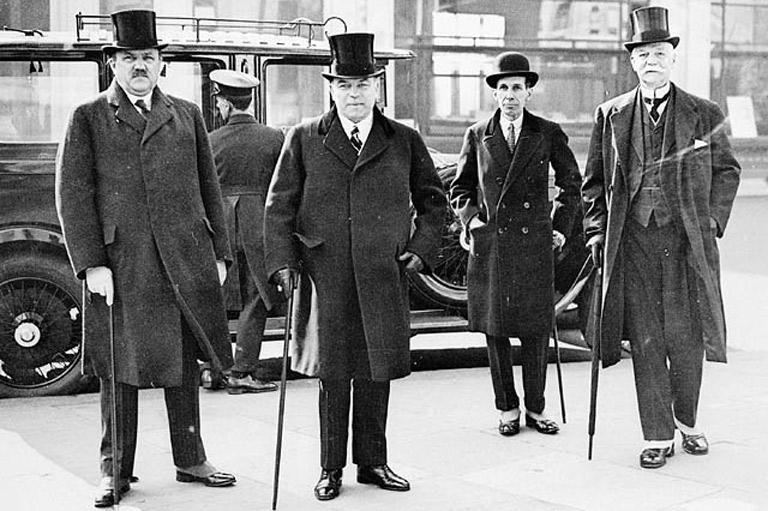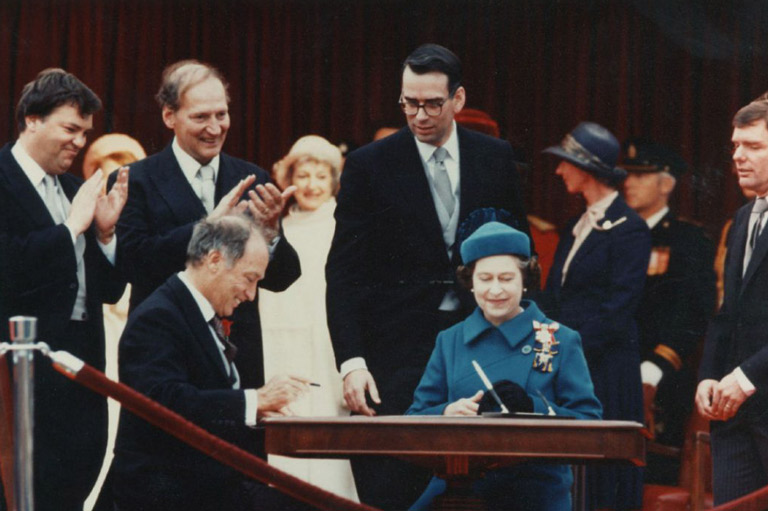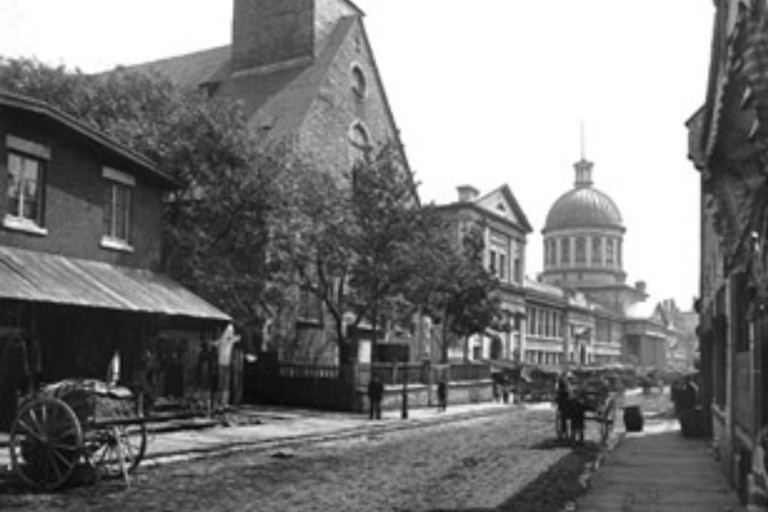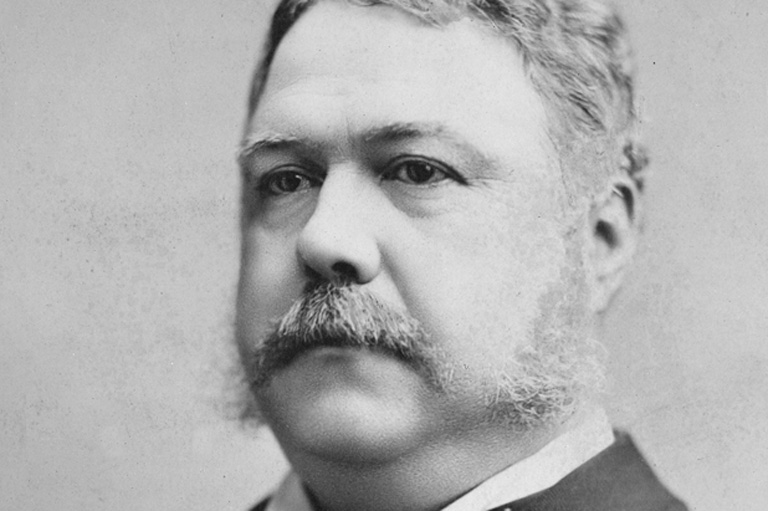Parliament in Flames
-
 After a mob sets fire to the Parliament Building in Montreal, the capital moves to Toronto. However, there is continuing debate about the most suitable location for the seat of government.
After a mob sets fire to the Parliament Building in Montreal, the capital moves to Toronto. However, there is continuing debate about the most suitable location for the seat of government. -
 Louis-Hippolyte Lafontaine, about 1880.McCord Museum
Louis-Hippolyte Lafontaine, about 1880.McCord Museum -
 James Bruce, Earl of Elgin. Painting by Cornelius Krieghoff, about 1845.McCord Museum
James Bruce, Earl of Elgin. Painting by Cornelius Krieghoff, about 1845.McCord Museum -
 Ruins of the Great Fire at Montreal. Engraving by John Henry Walker, 1850–1885.McCord Museum
Ruins of the Great Fire at Montreal. Engraving by John Henry Walker, 1850–1885.McCord Museum -
 The burning of the legislature of Canada. Engraving by John Henry Walker, 1850–1885.McCord Museum
The burning of the legislature of Canada. Engraving by John Henry Walker, 1850–1885.McCord Museum -
 Lord Elgin and Staff leaving Government House for Parliament, April 1849. Drawing by Francis Augustus Grant, about 1849.McCord Museum
Lord Elgin and Staff leaving Government House for Parliament, April 1849. Drawing by Francis Augustus Grant, about 1849.McCord Museum -
 The Burning of the Parliament Building in Montreal, a painting attributed to Joseph Légaré, about 1849.McCord Museum
The Burning of the Parliament Building in Montreal, a painting attributed to Joseph Légaré, about 1849.McCord Museum -
 Government rotates Parliament between Toronto and Quebec City every four years, a system known as perambulation. When the building in Quebec accidentally burns down, the government moves to the Quebec Music Hall and Courthouse.
Government rotates Parliament between Toronto and Quebec City every four years, a system known as perambulation. When the building in Quebec accidentally burns down, the government moves to the Quebec Music Hall and Courthouse.
On the morning of April 25, 1849, Lord Elgin, Governor General of the Province of Canada, rode away from the Parliament Building in Montreal. He had just given assent to the Rebellion Losses Bill, a highly contentious piece of legislation that severely tested Canada’s newly won system of responsible government.
The bill authorized compensation to people in Canada East (Quebec) who had suffered losses as a result of the infamous uprisings of 1837-1838. It should have been adopted without incident.
A similar bill had passed years earlier for victims in Canada West (Ontario) and the assembly had endorsed this new bill by a vote of more than two to one.
As his stately horse-drawn carriage made its way slowly through the busy market, a large crowd surrounded it. Some French voices cheered, but English ones jeered. Lord Elgin had expected as much.
He had been under considerable pressure to veto the law, either by dissolving Parliament or by referring the bill to the Imperial Parliament in London. “The Tory party are doing what they can by menace, intimidation, and appeals to passion to drive me to a coup d’état,” Elgin wrote.
But he refused to counter the decision of the elected assembly — a triumph for Canada’s fledgling democracy, but a blow to Montreal’s pro-British Tory elite, the English business class. To them, the bill rewarded French-speaking rebel Patriotes.
Suddenly, Elgin’s carriage shuddered, hit by a large rock. The atmosphere became leaden, with the jeers drowning out all other noise.
That same afternoon, the Gazette of Montreal hastily printed an extra edition with a call to gather for a mass meeting at 8 p.m. that evening:
The Disgrace of Great Britain accomplished! Canada Sold and Given Away!
The End has begun.
Anglo-Saxons you must live for the future. Your blood and your race will now be supreme.
A crowd of respectable members of the English community gathered at Place d’Armes in central Montreal. The smell of alcohol filled the air. Angry voices stoked the crowd. Soon the mass of people moved purposefully towards Parliament, with torches in hand.
The large Parliament Building, a lovely two-storey limestone structure, spread over 106 metres on one side of the market square and contained two libraries, including all the archives of government. One end housed the elected assembly and the other the legislature.
Inside, the assembly was still in session and the large frame of Augustin-Norbert Morin, a man still remembered for his active involvement in the Rebellion of ‘37, calmly conducted business from the Speaker’s chair. Morin was a self-possessed, organized man who controlled the assembly with assurance. Noise from the unruly mob shook the windows as the session continued. Soon, rocks crashed through the glass, followed by fiery torches. A strapping young man ran into the assembly hall and declared, “I hereby dissolve Parliament!”
Simultaneously, the gas mains were opened and set on fire. Curtains were ablaze and the startled members, men from the furthest reaches of the Province of Canada (Ontario and Quebec today), began to rise.
Morin’s loud, calm voice called them to order: He insisted on a formal motion of adjournment.
William Rufus Seaver, a pastor who witnessed the event, described the crowd as “a rabble (for that is the only name to call it, even if it was made up of some of our finest citizens).” He went on to describe how they grabbed the golden mace, symbol of royal authority, and “carried it into the street, yelling scornfully and disdainfully all the while.”
With 7 uniquely curated newsletters to choose from, we have something for everyone.
A magnificent painting of Queen Victoria was hastily cut out of its frame and saved from the flames. It now hangs outside of the Senate in the Centre Block of Parliament Hill in Ottawa. Other priceless paintings and documents did not escape the fire. A total of 23,000 volumes in the Parliament’s two libraries and archives were lost. Much of it was irreplaceable.
Article continues below...
You might also like...
The government had anticipated trouble, but had only two security men at its immediate disposal. Lord Elgin and others felt that resorting to extra protection would exacerbate the problem. And perhaps they did not believe that respectable businessmen would attempt to destroy the seat of government.
During the days that followed, shaken members of the assembly convened for a special meeting at Bonsecours — a domed two-storey market that still stands today. This time they were under the protection of British soldiers. As smoke lingered over the city, the members appointed a committee to report on the bills that were destroyed in the fire.
Controversy surrounding the Rebellion Losses Bill had rocked the colony since the end of the uprisings. Well-remembered in Quebec as La Rebellion des Patriotes de 1837-38, the uprisings began when followers of Louis-Joseph Papineau in Lower Canada (Quebec) and William Lyon Mackenzie in Upper Canada (Ontario) tried to throw off the colonial yoke in an attempt to create a republic. British forces suppressed the uprising, hanging or exiling some of the perpetrators, but the ideal of responsible government forged in the crucible of that period would eventually guide Canada to independence.
In the aftermath of the rebellions, thousands of people in both provinces who had remained loyal to the Crown filed for compensation. In the meantime, Britain merged the two provinces into one. The new Province of Canada would have an English majority, and Upper and Lower Canada became known as Canada West and Canada East, two regions of the same province. Legislation to compensate those living in Canada West (Ontario) passed without fanfare in 1845.
But there was much resistance to extending the same to people in Canada East (Quebec).
Save as much as 40% off the cover price! 4 issues per year as low as $29.95. Available in print and digital. Tariff-exempt!
Louis-Hippolyte LaFontaine was the first prime minister of this new parliamentary democracy, experiencing its birth by fire. He had committed his government to making sure that those who had suffered unfairly at the hands of the soldiers would be compensated. In fact, in the minds of his French electors, the Rebellion Losses Bill had become a symbol, the necessary proof that his government really represented them. His voters felt a wrong had been committed against them, and if the government did not correct it, then it was not their government.
Robert Baldwin, the highly respected Reform leader in Canada West, had made common cause with LaFontaine.
They shared the belief that the British government would respect their right to govern if they demonstrated a convincing majority of support among the people of both Canada West and Canada East.
They won that majority in the elections of 1848, carried largely by the French vote in Canada East. LaFontaine, who became the first prime minister on January 18, 1849, had Lord Elgin read the Speech from the Throne in both French and English at the opening of Parliament.
This act showed that Canada had achieved responsible government and that French was accepted as an official language of Parliament. The one promise yet to be fulfilled was the passage of the Rebellion Losses Bill. But much still stood in the way.
Montreal’s Tories found themselves in opposition for the first time since the creation of Lower Canada in 1791. In previous elections, even if they found themselves in the minority, they still had the ear of the governor, they still controlled the legislature, the upper house, and they still had the final say. This time was different, though. Lord Elgin had committed himself to abide by the decisions of whichever party could demonstrate that it had the confidence of the people.
In 1844, the seat of Parliament had been moved from Kingston, Ontario, to Montreal. This brought it closer to the powerful English business elite that had controlled Canada since the late 1700s. They seethed with resentment in the face of the successful election of a French prime minister who had himself been a Patriote, a rebel. It seemed to the city’s English merchant class that LaFontaine’s insistence on the Rebellion Losses Bill was just a way for the rebels to exact revenge for having lost the rebellion.
The rioting that began with the burning of the Parliament Building lasted two days. During the riots, a mob attacked LaFontaine’s beautiful home in Montreal’s Overdale district. They set fire to his valuable library containing both books and manuscripts. They destroyed his furniture and china, and set his stables on fire.
Other supporters were attacked in the street. Elgin himself stayed behind the walls of his home. In a letter he wrote to Lord Grey, the colonial secretary, on April 30, he expressed deep concern about the situation: “It is my firm conviction that if this dictation [by the mobs] be submitted to, the government of this province by constitutional means will be impossible....”
Elgin ventured out only once. On that occasion his carriage was pelted with stones. Making his way home, he chose an unexpected route to avoid confrontation, but when the mob learned his route they gave chase, forcing his driver to whip the horses.
After that, he stayed home, protected by guards and indifferent to the accusations of cowardice published in the Tory papers. “I am prepared,” he said, “to bear any amount of obloquy that may be cast upon me, but, if I can possibly prevent it, no stain of blood shall rest upon my name.” Elgin knew that a confrontation could cause the whole French populace to rise in defence of the government, resulting in a “collision between the races.”
The situation calmed for a while, but the troubles flared up again in August after a number of arson suspects were rounded up and charged. LaFontaine was twice attacked on the street.
His house was again targeted, but this time friends rallied around him. They hid in the shadows behind the window shutters on the otherwise calm night of August 18. As they waited in the dark, a mob approached and began throwing stones. LaFontaine’s friends fired from their hiding places. The mob fired back. By the time the shooting was over, seven of the attackers were wounded and one of them, William Mason, eventually died.
Tory papers stoked the already smouldering situation, condemning the act of murder “of an Anglo-Saxon by a Frenchman.” William Mason was carried to his grave, surrounded by men in red armbands, and when LaFontaine testified at the inquest into Mason’s death, a rabble set fire to the hotel where the inquest was being held.
Lord Elgin, who could easily have called in the army and violently quelled the rioters, refrained from doing so. Even his most vocal supporters could not abide his patience, but, in the end, having no fresh fuel to feed their fury, the troublemakers calmed down.
Elgin’s tactic had worked. By backing the assembly’s decision in the face of doubt, questions, and violence, Lord Elgin proved to be the successful midwife attending at the birth of responsible government in Canada.
Over one hundred and fifty years ago, Canadian democracy faced its first major challenge: The transfer of power from the governor to an elected Parliament came at a cost with the burning of the Parliament Building, but the new government held and brought forth a modern, bilingual, self-governing society. While we celebrate Confederation as the beginning of our country, it would not have been possible without the successful birth of a self-governing Canada in 1849.
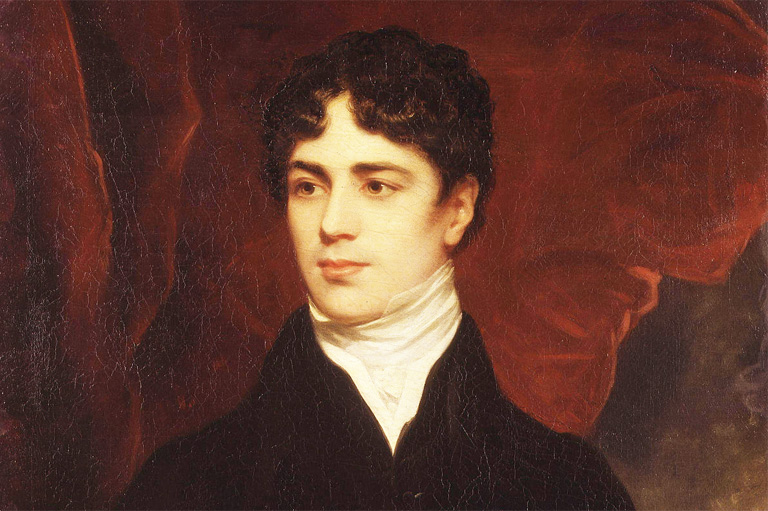
Lord Durham
The Englishman who kept French culture alive.
Text by Richard W. Pound
It may be too late for Lord Durham to be embraced within Quebec as the person who made it possible for French language and culture to thrive in North America. After all, Durham had expected the French to eventually assimilate into English Canada. For this, as well as some of his more trenchant observations of Lower Canada, he has become a prime target in some histories.
But, consider the situation in Durham’s time. The 1837-38 rebellions in Lower Canada were not popularly based, were opposed by the Roman Catholic clergy were of interest only to certain members of professional classes, and were easily crushed. The leaders either were dealt with or escaped outside the country The real conflicts, as Durham saw them, were rooted in race, not politics.
The Patriotes were capable of tactical initiatives — such as paralyzing the colonial government — but were devoid of strategic planning to improve conditions for their compatriots. And they enraged the British minority in Lower Canada, which believed it should have political control out of proportion to its size. This was an unreasonable view, even allowing for the fact that universal suffrage was generations in the future and that the franchise of the time depended on ownership of real property.
Tensions between English and French in Lower Canada would inevitably have led to armed conflict. French Canadians would then have faced a dilemma, since Britain would certainly have taken the side of the colonists of British origin. The Americans might have intervened, but only out of self-interest — the survival of French-Canadian language, customs, and institutions would have been of no consequence to them. French Canadians themselves were unequipped for war and France was unable and disinclined to help them.
The French Canadians would lose much if war broke out. The extraordinary protections of the Quebec Act of 1774 and the Constitution Act of 1791 would certainly disappear. At best, they might maintain their traditional existence in isolated rural communities. At worst, they risked complete absorption into a North American melting pot.
Into this highly charged situation came Lord Durham, by far the most important British personage ever to visit the colonies. He arrived in May of 1838, clothed with unprecedented power as Governor General and High Commissioner to North America. The Constitution Act of 1791 was suspended. Not only was Durham to govern, he was also to find a solution to the future governance of the colonies.
No one else in the British Empire had the capacity and personal reputation to undertake this enormous task. Even at that, party politics in Westminster undermined Durham’s authority and he resigned as Governor General after only a few months in Canada. However, he continued with preparation of his report and devoted all of his efforts in the short time he lived thereafter — he died in 1840 at age forty-eight — to ensuring that his recommendations were accepted.
It has become fashionable to criticize the Durham Report. Critics point to the short time he spent in Canada, his assessment of French Canadians as “a people with no literature and no history,” and his expectation that they would eventually be assimilated into a British society. He’s also been taken to task for his views on Upper Canada and certain of his historical observations.
Many of the criticisms are valid, but they overlook the huge and central vision of responsible government contained in the report. The report was essentially a political document; it was never intended to be a doctoral thesis in history. No one, other than Durham, could possibly have put forward such an idea with any credibility; especially in the only place where it mattered — Westminster. It became Durham’s mission to bring Westminster to the conclusions he had reached. This was complicated by the fact that the Imperial Parliament was largely uninformed and uninterested in colonial matters, other than as fodder for domestic political advantage.
His larger vision was a form of confederation of all the Canadian colonies, but that time was not yet ripe. It would not fully ripen until Britain noted the size of the army the United States was able to mobilize for the American Civil War and realized that it could not hope to win a war in North America. In the short term, however, the Upper and Lower Canada situation had to be dealt with on an urgent basis. A French-Canadian majority could not be allowed to impede the development of the Canadas.
The solution was to join the two provinces, undoing the separation established in 1791. A single legislature would include an equal number of representatives from Canada East and Canada West. This ensured an overall majority for English Canada, infuriating the French Canadians, since the population was greater in Canada East (the former Lower Canada). But there was no other realistic possibility And it forced both parties to find ways to work together.
Almost three decades later, Durham’s vision found expression in Confederation, in which the rights of French Canadians were entrenched in a constitution. Given other circumstances, things might have turned out quite differently.
Moving Parliament
Ottawa was not always Canada’s capital. Here are some of its earlier locations:
Kingston, Ontario, 1841–1843
With Upper and Lower Canadian newly united as the Province of Canada, Governor General Charles Sydenham chooses Kingston as the capital. The first three sessions of Parliament are held in a vacant hospital that has been renovated for the purpose.
Montreal, 1844–1849
Parliament moves to Montreal because Sydenham’s successor, Sir Charles Bagot, believes Canada needs a seat of government acceptable to both French and English. Also, Kingston is seen as too vulnerable because of its proximity to the American border.
Toronto, 1849–1851
After a mob sets fire to the Parliament Building in Montreal, the capital moves to Toronto. However, there is continuing debate about the most suitable location for the seat of government.
Quebec City, 1852–1855
Parliament moves here after the government decides to rotate Parliament between Toronto and Quebec City every four years, a system known as perambulation. The Parliament Building in Quebec accidently burns down in 1854, so the government moves to the Quebec Music Hall and Courthouse.
Toronto, 1856–1859
It’s Toronto’s turn to host Parliament under the perambulation system. But many members think moving every four years is too costly, so they vote by a narrow margin to make Quebec the permanent capital. Even so, the debate rages on and a year later, the assembly asks Queen Victoria to settle the matter.
Quebec City, 1860–1865
Parliament returns to Quebec, but only temporarily. Queen Victoria has surprised everyone by picking Ottawa, a rough little lumber town located on the border between French and English Canada. It takes four years to construct the Parliament Buildings, which open in Ottawa in 1866.
We hope you’ll help us continue to share fascinating stories about Canada’s past by making a donation to Canada’s History Society today.
We highlight our nation’s diverse past by telling stories that illuminate the people, places, and events that unite us as Canadians, and by making those stories accessible to everyone through our free online content.
We are a registered charity that depends on contributions from readers like you to share inspiring and informative stories with students and citizens of all ages — award-winning stories written by Canada’s top historians, authors, journalists, and history enthusiasts.
Any amount helps, or better yet, start a monthly donation today. Your support makes all the difference. Thank you!
Themes associated with this article
Advertisement
You might also like...

Canada’s History Archive, featuring The Beaver, is now available for your browsing and searching pleasure!



